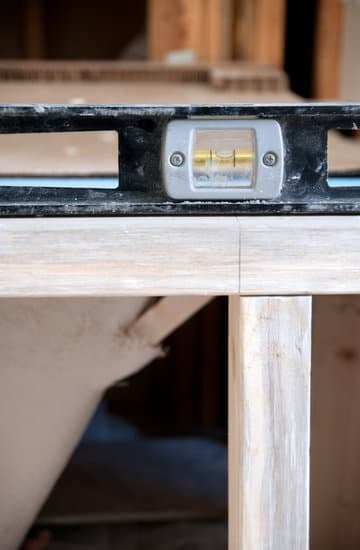Breathing is essential for life, but how often do we pay attention to the way we breathe? In today’s fast-paced world, many of us don’t realize that our breathing patterns can have a significant impact on our overall health and well-being.
This article will delve into the importance of proper breathing and provide valuable insights on how to improve your breathing at home. Breathing exercises not only contribute to physical health but also play a crucial role in maintaining mental wellness.
Understanding the basics of breathing is fundamental to improving respiratory function. By exploring the mechanics of breathing and the role of the diaphragm and chest in the process, individuals can gain a deeper understanding of their own breathing patterns. Additionally, this article will identify common breathing issues and their causes, shedding light on potential obstacles to optimal respiratory health.
Moreover, this piece will delve into specific breathing techniques that can be practiced at home to enhance lung capacity and oxygenation. Deep breathing exercises, diaphragmatic breathing, and alternate nostril breathing are just a few examples of techniques that can greatly improve respiratory function when incorporated into daily routines.
By incorporating mindfulness practices into everyday life, readers can cultivate a greater sense of awareness around their breath and reduce stress levels. Furthermore, creating a breath-friendly environment at home by addressing indoor air quality and pollutants will be explored as an important aspect of promoting better respiratory health.
Understanding the Basics of Breathing
Breathing is a fundamental process that often goes unnoticed, yet it plays a crucial role in our overall health and well-being. Understanding the basics of breathing can shed light on how to improve respiratory function and foster better mindfulness. The mechanics of breathing involve the diaphragm, which contracts and flattens during inhalation, allowing the lungs to expand and fill with air.
Concurrently, the intercostal muscles between the ribs also contract to further expand the chest cavity. During exhalation, these muscles relax, and air is expelled from the lungs.
For many people, issues with breathing stem from poor posture, stress, or underlying health conditions such as asthma or chronic obstructive pulmonary disease (COPD). Poor posture restricts the movement of the diaphragm and affects its ability to aid in breathing efficiently. In contrast, stress can lead to shallow breathing by promoting tension in the neck and shoulders, limiting airflow into the lungs. Understanding these common issues is essential for addressing them effectively.
Taking a moment to focus on your breath provides an opportunity for self-awareness and reflection. It can serve as a gateway to calming your mind and easing feelings of anxiety. Being mindful of your breath involves paying attention to its rhythm, depth, and quality without attempting to modify it. This simple practice encourages deep diaphragmatic breathing and has been shown to reduce stress levels significantly.
| Common Breathing Issues | Possible Causes |
|---|---|
| Poor Posture | Restricts diaphragm movement |
| Stress | Promotes shallow breathing due to tension |
| Asthma or COPD | Underlying health conditions affecting respiratory function |
Breathing Techniques for Improved Respiratory Function
Proper breathing is essential for maintaining good overall health and well-being. Whether you are looking to reduce stress, increase lung capacity, or improve oxygenation, engaging in breathing exercises can have a significant impact on your respiratory function. Here are some effective breathing techniques that you can practice at home:
- Deep Breathing Exercises: Deep breathing helps increase lung capacity and oxygen supply to the body. One simple exercise is to inhale deeply through your nose, hold the breath for a few seconds, and then exhale slowly through your mouth. Repeat this several times to expand your lung capacity and improve respiratory function.
- Diaphragmatic Breathing: Also known as belly breathing, diaphragmatic breathing involves using the diaphragm instead of the chest to breathe. To practice this technique, place one hand on your chest and the other on your abdomen. Inhale deeply through your nose while expanding your abdomen, then exhale slowly through pursed lips.
- Alternate Nostril Breathing: This ancient yoga technique is great for promoting balance and relaxation. Sit comfortably with an erect spine, use your right thumb to close off your right nostril and inhale deeply through the left nostril. Then close off the left nostril with your ring finger and exhale through the right nostril. Continue this pattern for several breaths.
By incorporating these breathing exercises into your daily routine, you can improve your respiratory function, reduce stress, and enhance overall well-being from the comfort of your own home.
The Power of Mindfulness and Breathing
Exploring the Connection
Mindfulness and breath awareness are deeply interconnected, with one influencing the other. By practicing mindfulness, individuals can become more attuned to their breathing patterns, allowing them to identify any irregularities or difficulties in their respiratory function. Mindfulness also encourages individuals to be present in the moment, which can help alleviate stress and anxiety that may be affecting their breathing.
Improving Breathing and Reducing Stress
The practice of mindfulness has been shown to have a positive impact on reducing stress and promoting relaxation, which in turn can lead to improved breathing. When individuals are less stressed, they are less likely to experience shallow breathing or hyperventilation, leading to better overall respiratory function.
Tips for Incorporating Mindfulness
Incorporating mindfulness into everyday life can be a powerful tool for improving breathing at home. Simple practices such as meditation, deep breathing exercises, and body scans can help individuals become more aware of their breath and promote relaxation. Additionally, mindfulness techniques can be integrated into daily activities such as cooking, walking, or even doing household chores.
Creating a Breath-Friendly Environment at Home
When it comes to improving your breathing at home, creating a breath-friendly environment is essential. By making some simple changes to your surroundings, you can support better respiratory health and overall well-being. Here are some tips for creating a breath-friendly environment at home:
- Improve indoor air quality: Regularly clean and dust your home to reduce allergens and pollutants in the air. Consider using an air purifier to remove particles that can affect respiratory function.
- Utilize houseplants: Incorporating houseplants into your living space can help improve indoor air quality by absorbing toxins and releasing oxygen. Look for plants known for their air-purifying properties, such as peace lilies or snake plants.
- Reduce allergens: Take steps to minimize allergens in your home, such as keeping pets out of bedrooms, using hypoallergenic bedding, and regularly washing curtains and rugs.
Creating a breath-friendly environment at home can have a significant impact on your respiratory health and overall well-being. By following these tips, you can support better breathing and create a space that promotes optimal lung function.
The Role of Physical Activity in Respiratory Health
Physical activity plays a crucial role in maintaining healthy lungs and optimal respiratory function. Staying active not only strengthens the muscles involved in breathing but also improves lung capacity and efficiency. Here are some ways to incorporate physical activity into your routine to support better breathing:
- Aerobic exercises: Engaging in activities such as brisk walking, cycling, or swimming can help boost lung function and improve cardiovascular health.
- Strength training: Building muscle strength through activities like weightlifting or resistance exercises can enhance the muscles used for breathing, promoting better respiratory function.
- Yoga and Pilates: These mind-body practices focus on controlled breathing techniques while also improving flexibility and core strength, which can benefit overall respiratory health.
By embracing physical activity as part of your daily routine, you can support better breathing and improve your overall respiratory health. Whether it’s through aerobic exercises, strength training, or mindful practices like yoga, staying active at home can contribute to better lung function.
The Role of Physical Activity in Respiratory Health
Physical activity plays a crucial role in maintaining optimal respiratory health. Engaging in regular exercise not only improves lung function but also enhances overall breathing capacity. By incorporating specific exercises into your routine, you can effectively support and strengthen your respiratory system.
The Impact of Exercise on Lung Function
Regular physical activity has been shown to increase lung capacity and improve the efficiency of oxygen intake. When you engage in aerobic activities such as walking, running, or swimming, your lungs are continuously challenged to work harder, thus enhancing their function over time. Additionally, strength training exercises that target the muscles used for breathing can further boost respiratory health.
Recommended Exercises for Improving Respiratory Health
Cardiovascular activities like brisk walking, cycling, and dancing are excellent choices for improving lung function. These exercises help to strengthen the muscles involved in breathing and enhance overall respiratory endurance. Incorporating activities that promote deep breathing and breath control, such as yoga and Pilates, can also be highly beneficial for respiratory health.
Tips for Staying Active at Home to Support Better Breathing
Even if you’re unable to go to a gym or participate in outdoor activities, there are numerous ways to stay physically active at home. Simple yet effective exercises like jumping jacks, squats, and lunges can help maintain healthy lung function. Additionally, utilizing online workout videos or fitness apps can provide guidance for a variety of home-friendly workouts that support respiratory health.
By prioritizing physical activity and incorporating targeted exercises into your routine, you can significantly contribute to better breathing and overall respiratory well-being.
Nutrition and Better Breathing
Identifying foods that can support respiratory health is an important aspect of improving breathing at home. Some key foods that can benefit lung function include apples, fish high in omega-3 fatty acids, ginger, garlic, turmeric, and leafy greens such as spinach and kale. These foods have anti-inflammatory properties and can help reduce inflammation in the respiratory system, making it easier to breathe.
Additionally, staying hydrated is crucial for optimal breathing function. Drinking an adequate amount of water throughout the day keeps the mucous membranes in the respiratory tract moist, which helps to prevent irritation and allows for better air exchange.
In addition to specific foods, there are dietary tips that can contribute to improved lung function. Avoiding processed foods and trans fats is beneficial for respiratory health because these substances can contribute to inflammation in the body.
Instead, focusing on a diet filled with fresh fruits and vegetables, whole grains, lean proteins, and healthy fats like those found in nuts and avocados supports overall wellness. By incorporating these dietary changes into everyday life, individuals can take proactive steps toward better breathing at home.
It’s important to note that while nutrition plays a significant role in respiratory health, it is just one aspect of a comprehensive approach to improving breathing at home. The combination of proper nutrition with other strategies such as breathing techniques, mindfulness practices, creating a breath-friendly environment at home, regular physical activity, and seeking professional help when needed creates a holistic foundation for better respiratory function.
| Respiratory Health Foods | Dietary Tips |
|---|---|
| Apples | Avoid processed foods and trans fats |
| Fish high in omega-3 fatty acids | Focus on fresh fruits and vegetables |
| Ginger & Garlic | Lean proteins and healthy fats (nuts/avocados) |
Seeking Professional Help for Breathing Issues
When it comes to addressing breathing issues, seeking professional help is crucial for proper diagnosis and treatment. If you experience persistent shortness of breath, wheezing, or chest pain, it’s essential to consult with a healthcare professional. Additionally, if you have been diagnosed with a respiratory condition such as asthma, COPD, or sleep apnea, seeking the expertise of a respiratory therapist or pulmonologist can significantly improve your quality of life.
These specialists can conduct thorough evaluations to identify the underlying cause of your breathing problems. They may perform lung function tests and imaging studies to assess your respiratory health. Based on the findings, they can develop personalized treatment plans tailored to your specific needs. This may include medication management, breathing exercises, pulmonary rehabilitation programs, and lifestyle modifications to optimize your respiratory function.
In some cases, seeking professional help for breathing issues may also involve coordinating care with other healthcare providers. For instance, individuals with asthma may benefit from working with an allergist to manage their allergies and minimize triggers that exacerbate their symptoms. By collaborating with a multidisciplinary team of experts, you can receive comprehensive care that addresses all aspects of your respiratory health. Remember that early intervention and proactive management are key in effectively addressing breathing issues and preventing complications.
Conclusion
In conclusion, understanding the importance of proper breathing and implementing effective techniques at home can significantly improve respiratory function and overall well-being. By incorporating deep breathing exercises, mindfulness practices, creating a breath-friendly environment, staying physically active, consuming a healthy diet, and seeking professional help when needed, individuals can empower themselves to breathe better at home. These strategies not only support respiratory health but also contribute to reduced stress levels and enhanced quality of life.
It is important for readers to prioritize their respiratory health and recognize the impact that conscious breathing can have on their daily lives. The power of breath awareness and its connection to mental and physical wellness should not be underestimated. By making simple yet meaningful changes in their everyday routine, individuals have the potential to experience improved lung function, reduced inflammation, increased energy levels, and better overall health.
Ultimately, the journey towards better breathing begins at home. Taking the time to implement these strategies can lead to long-term benefits for respiratory health. With determination and commitment, individuals can incorporate breathing techniques into their daily lives and experience the transformative effects it has on their well-being. By prioritizing proper breathing practices at home, individuals are taking proactive steps towards empowering themselves to live healthier and more fulfilling lives.
Frequently Asked Questions
How Can I Improve My Breathing Naturally?
There are several natural ways to improve your breathing. One way is to practice deep breathing exercises, which can help increase lung capacity and improve oxygen flow. Additionally, staying active and incorporating regular exercise into your routine can strengthen the muscles involved in breathing. And maintaining good posture can also support proper breathing by allowing the lungs to fully expand.
How Can I Make Myself Breath Better?
Making a conscious effort to breathe better involves paying attention to your breathing patterns throughout the day. It’s important to avoid shallow breathing, which can lead to reduced oxygen intake and increased stress levels.
Taking slow, deep breaths from the abdomen, rather than the chest, can help improve overall lung function and reduce respiratory rate. Mindfulness techniques such as meditation can also be beneficial in promoting deeper, more efficient breathing.
How Can I Breathe to Improve My Lungs?
To specifically target lung improvement, engaging in activities that promote cardiovascular endurance and respiratory strength is key. Incorporating aerobic exercises like running, swimming, or cycling can help increase lung capacity and efficiency over time.
Additionally, practicing pursed lip breathing – inhaling through the nose and exhaling slowly through pursed lips – can help open up airways and strengthen respiratory muscles for improved lung function.

I’m thrilled to have you here as a part of the Remodeling Top community. This is where my journey as an architect and remodeling enthusiast intersects with your passion for transforming houses into dream homes.





